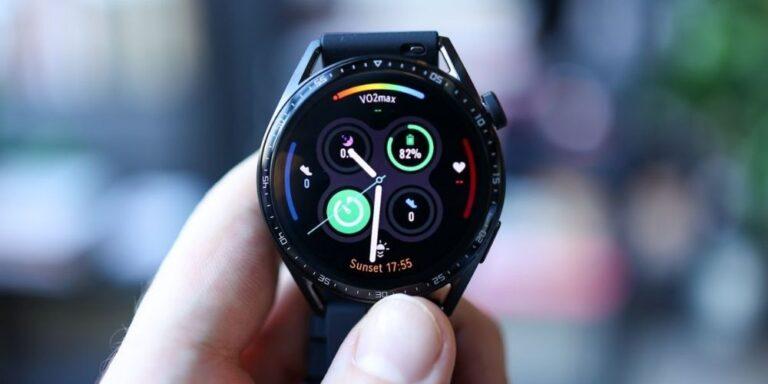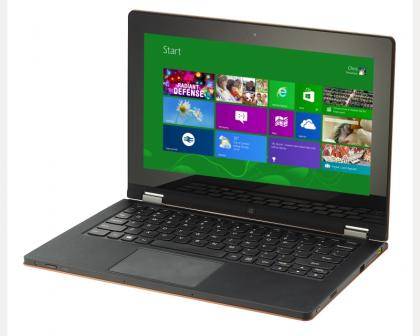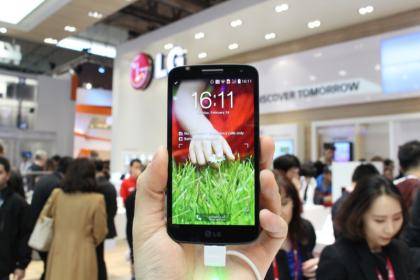iPhone 14: five reasons why the notch is clearly staying
I've been thinking hard about the notch over the last few days, ever since I saw the news that the iPhone 14 might get the old 'pill and punch' design.
I don't mean the notion that the new iPhone will remove the notch altogether - we've heard that rumor for a few years now, ever since it appeared on the iPhone X in 2017 - but that Apple might go for the 'pill and punch' design instead .
I wrote something about this yesterday, but I've been ruminating on it since - and I've had another thought on why it's going to stick around, despite trying to think about what could cause Apple to drop the notch altogether.
There are just so many reasons why losing the little cutout at the top makes little sense for Apple... not least because it needs a place to house all the sensors and cameras that allow for its Face ID to function.
Don't misunderstand what I'm trying to say though: I desperately want to see the notch, and every little thing that interferes with a smooth screen, to be gone from all smartphones. It's a necessary evil, sure, but I cannot wait for the year when having any kind of notch or hole in the screen of any phone launched is really weird.
But I just can't see it happening in 2022. Perhaps I'll be wrong. Maybe the iPhone 14 and 14 Pro will come with the notch and the iPhone 14 Max will have something different. Maybe Apple will tear up its own design rule book.
But having covered every iPhone launch since the 3G , we've rarely seen anything massively change in this way - the notch, surely, is staying.
A necessary notch
Apple doesn't do anything it doesn't have to. When talking about the very early days of the iPhone, it didn't allow you to copy and paste things between apps. It didn't have a good camera for years.
Only with the iPhone 13 series did it finally offer decent battery life - sure, that likely was a by-product of needing more power to allow for the 5G connectivity, but I was shocked, when I tested the battery life, that Apple hadn't made a huge song and dance about this big increase to battery life in the iPhone 13 launch.
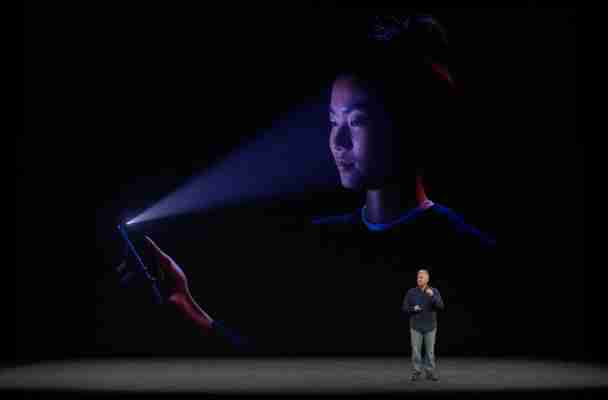
The notch houses a few key things for the iPhone: a variety of sensors, the IR emitter that allows Face ID to function, and the front-facing camera.
These are bigger sensors than you find in most Android phones because Face ID needs them - they have to have a home in the chassis somewhere , so when making the iPhone X this was the best compromise Apple could come up with.
So anything that replaces the notch needs to achieve the same functionality, and I'm not seeing technology on other phones that could do so right now.
The alternative to the notch is ugly
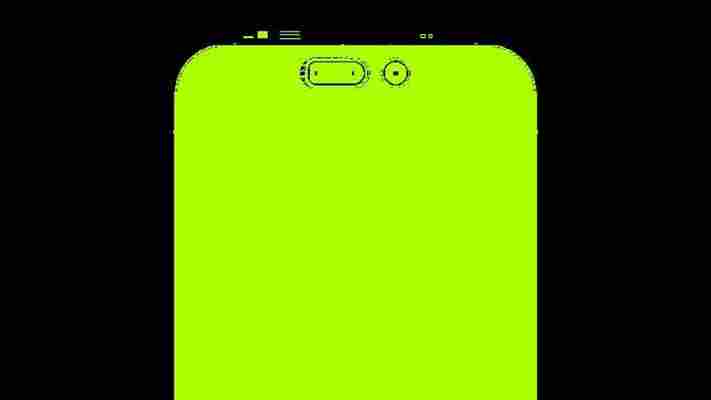
OK, I've instantly lied. I can think of a few things, and one of them is heavily rumored for the new iPhone... but I can't see it happening.
The punch hole and pill-shaped opening have been used in a few phones recently, and do allow for more screen to spill around their edges, giving a bit more screen real estate.
But they still sit there, mildly ruining movie watching or internet browsing, so it's hard to see how they're any better than the notch.
There's also the bigger issue: the implementation of these two differently-shaped holes, by nature, is asymmetrical. I can't see a company that's so obsessed with design ( did you know that the edge of the seats in in the new Apple stores have the same curvature as the iPhone 11 ?) would put something so ugly on there.
I mean, Apple could go for a pop up sensor, but they can fail and also don't allow for the smooth viewing of notifications where you just hover your face over - hugely unlikely given that's a fan-favorite feature.
Face ID is going nowhere
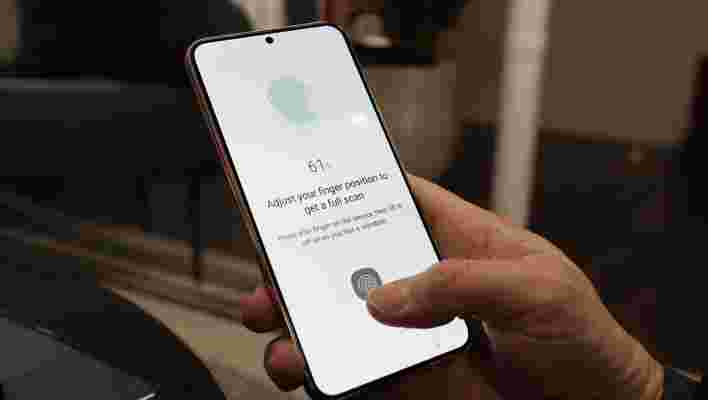
This is a key one - the iPhone isn't going to bring back the home button, as it's keeping that exclusively for the iPhone SE range (and there are strong, strong rumors that the iPhone SE 3 will keep that design).
So the only option would be to get rid of the sensors needed to enabled Face ID - use the front-facing camera? Less accurate, less secure. Not going to happen.
Therefore the only option is to add in an under-display fingerprint scanner. Now, this one has legs as an idea: Apple could do it well. It's a technology that's flickering on the edge of viability, as brands like Samsung have implemented it pretty well on things like the S22 Ultra - but is still prone to weird execution, as this piece on the Pixel's in-screen scanner sadly shows .
Apple could definitely drop Face ID in favor of the tech if it upgraded its capability (and I'm sure we'll see it as an option in the near future), but it would require the camera to disappear to a smaller level to totally shed the notch - and, as we're about to see, that's so unlikely.
The 'true' technology isn't ready
Of course, the true 'all display' iPhone is the goal here. Something that doesn't have anything getting in the way of the screen at all, where the sensors are there but hidden somehow.
That could only, realistically, be achieved in one of two ways: either move the earpiece and put the sensors in the frame, or put them under the display.
Sure, we've seen multiple Android phones trying the same thing, and they're getting pretty good - the ZTE Axon 30 , for instance, does a pretty good job of selfie images without a visible front-facing camera.
But 'pretty good' won't wash for Apple, which is hell-bent on talking up its camera prowess at every given point. Having a camera under the screen is also, by nature, covering the sensors slightly, which means that Face ID will likely be slower and / or less accurate.
The only way this will work is when screen tech evolves to let enough light in that Apple's image processing can do its thing, and the IR sensors for security can be miniaturized enough to sit in the frame... but we're not there yet.
The notch is iconic, and people don't really mind it
I'm sat here in a canteen, tapping out some thoughts on the notch and whether it's going to continue... and I can see three people in my immediate vicinity all using recent iPhones that pack the cut-out screen portion at the top.
The truth is that, while the notch isn't the ideal solution, Apple has embraced it and users aren't that bothered. Reports of the iPhone 13 being a record-breaking model - hitting around 40 million sales - suggest that there's not really an issue with the notch in the eyes of those considering which iPhone to buy.
That's not to say that people like it, as it's still something ugly and in the way, but a discussion over on the r/apple forum on Reddit, when discussing if the notch should stay or go , goes some way to explaining the sentiment:
" I have no issues with the notch. My brain ignores it… just like my eyes see my nose at all times, but again, my brain ignores it."
People just don't see it any more. Another thread commenter breaks it down in an even easier way:
"Yes, [Apple] tried to make [the notch] part of the design the best they could. Yes, they’ve exploited this "design anomaly" for their branding, it has a very singular "icon" translation. Yes, it’s not necessary [sic] ugly or aberrant.
"But. It’s not a feature in any way. It’s...a design compromise"
As referenced here, Apple has leaned into the notch. It's taken it from eyesore to emblem.
It's made the notch the icon for the phone, rather than pretending it's not there. People see a smartphone logo with a cutout, and they instantly see an iPhone.
Apple has gone so far with the notion, that it's able to put it in the MacBook Pro last year and it seems to (sort of) makes sense, even though it clearly doesn't when compared to multiple rivals not resorting to the same thing.
So... it seems likely that we'll still see the notch on the iPhone 14. I can't see a way that Apple drops it.
But, then again, I couldn't believe that the brand would have lost the headphone jack in the iPhone 7, even though people wanted it then (and still want) it. I'm sitting opposite someone with the Lightning headphone jack adaptor in, and yet Apple has been unyielding in its shoulder-shrug attitude to the cries to bring it back.
So perhaps I'll be sitting here, writing another piece of analysis in September, talking about how Apple has found a way to stack the pill and punch design in the middle of the screen in an 'elegant' way.
Or that it's completely scrapped the notch and spent a fraction of its massive R&D budget on figuring out how.
Or... maybe the notch will just be 7% smaller, a tiny bit taller and that'll be enough for another year to encourage iPhone sales and upgrades.
And if you don't care, maybe it's time to bite the bullet and go for the iPhone 13. We're still far enough away from the iPhone 14 launch that you'll get a decent deal, and it's too long to wait until August to get the best prices - take a look at the latest prices and see what you think.
Project Cambria: All there is to know about Meta's rumored Oculus Quest Pro
With Facebook's transformation into Meta and its embrace of the metaverse, 2022 is shaping up to be an important year for new virtual reality (VR) and augmented reality (AR) headsets. Following on the huge success of the Oculus Quest 2 will be Project Cambria, a top-of-the-line headset currently in development from Meta.
Project Cambria was first announced at the Meta Connect conference in October 2021. Dubbed "the Oculus Quest Pro" by eager fans and pundits, Project Cambria is a high-end virtual reality and augmented reality hybrid headset. This would make it distinct from the Oculus Quest 2 (and eventual Oculus Quest 3 ), in being aimed at for the pro and enthusiast end of the mixed-reality market.
Meta boss Mark Zuckerberg described it as “a completely new advanced and high-end product,” which will sit “at the higher end of the price spectrum.”
With Apple said to also be working on high-end virtual and augmented reality devices, not to mention the imminent launch of the PlayStation VR 2 headset from Sony, Meta will be looking to shore up its position across the spectrum of all things VR.
Interested? You should be. Here’s everything you need to know about Project Cambria so far.
Project Cambria: Cut to the chase
May 3: Meta’s VR hardware roadmap has leaked , giving us details about its next four headsets, including the price and specs of its next VR headset: Project Cambria.
April 29: On a recent Meta earnings call, Mark Zuckerberg said Project Cambria will focus on productivity rather than playing video games. Over time the Meta CEO hopes that it’ll replace our laptop and work setup .
April 28: The roughly 30-minute Meta Quest Gaming Showcase highlighted several exciting new Quest 2 games that are headed our way over the coming year, including Among Us VR and Cities: VR. No mention of new hardware, however.
April 15: Unofficial renders using leaked info from the supply chain may offer insight into Project Cambria's design.
April 12: Tech analyst Ming-Chi Kuo predicts that Meta will soon refresh its VR headset with improved screen resolution and new mini LED displays. This newly upgraded Quest headset is slated to drop in “2H22” (the second half of 2022).
Despite the secrecy shrouding Project Cambria, we have surprisingly detailed information about what it will cost and when the device will be available. Meta has committed to a 2022 release for the headset.
But when precisely that launch will take place is hard to pin down -- we know, we know. The original Oculus Quest launched in May of 2019 , with the Oculus Quest 2 following in October 2020. That’s roughly 18 months apart; by that reckoning, May of 2022 would seem an appropriate guess.
Development timelines between products can be different, of course, and with the ongoing pandemic and supply chain issues plaguing all kinds of consumer tech products, we wouldn’t bet the house on any date.
What is guaranteed, by Zuckerberg’s own admission, is that this will be a more expensive device than the $299 / £299.99 Oculus Quest 2. And a leaked internal road map published by The Information suggests that Project Cambria will cost $799 (around £640 / AU$1,125) and will be about as powerful as a Chromebook – and it will run on Meta’s own Android-based operating system.
Meta has been candid already about what to expect from the Project Cambria hardware, which will be markedly more advanced than any Oculus headset that came before it.
Based on the best Chromebooks you can currently buy, as well as the specs of the Meta Quest 2, it sounds like Project Cambria will have at least 8GB RAM and likely around 256 GB of storage. We’ll also likely see its processor get a boost, too. But Meta may have to design its own chip, as Qualcomm has yet to launch a follow-up to the Snapdragon XR2 that powers Meta’s Quest 2.
We’ve also previously heard that Cambria will incorporate dual mini LED displays that will likely offer a 120Hz refresh rate (to improve upon the Quest 2’s “experimental” 120Hz feature).
Unofficial renders based on "the supply chain" emerged in mid April and appear to show a forward-facing camera. It's thought that this will enable mixed reality or augmented reality support, where digital elements are overlaid over scenes in the real world.
Beyond the speeds and feeds, we know Project Cambria will be a standalone, wireless headset. That’s not to say it won’t be able to connect to a PC for PC VR experiences (or even connect wirelessly to a powerful host PC, like the Oculus Link feature), but since the end of the Oculus Rift line in 2021, Meta’s focus has purely been on cable-free (out of the box, at least) VR hardware. This will also set it apart from the upcoming PlayStation VR 2 , which will not only be more of an entry-level device, but will also still need a wire to connect it to the PS5 console.
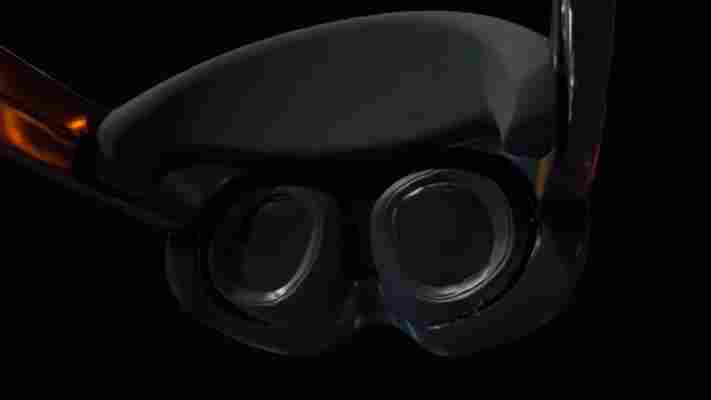
Meta was apparently working on the development of a combined AR/VR operating system -- and hit pause on it back in February, so the upcoming headset will not have a completely new software platform arriving along with it. According to the latest rumors, based on leaked internal road maps, Project Cambria will run on Meta’s own Android-based operating system.
One much-requested feature will finally get its moment in the spotlight – eye tracking. It’s an important aspect of the way humans interact with the world, and a readily-exploitable tool for developers of advanced virtual reality applications. With eye-tracking, devs have another form of user input to play with, not only letting them better understand where a user’s gaze is focused (and tailor interactive experiences appropriately), but also to take full advantage of foveated rendering.
In short, foveated rendering makes sure that the area of the display a user is focused on is displayed in the greatest possible detail, while the surrounding areas of a virtual environment aren’t shown in such high fidelity - much like how the human eye masks peripheral vision. It can be used to maximize device resource usage – pumping processing power only onto the fidelity of objects and areas that a user’s gaze is interacting with. It’s a hugely exciting part of the future-VR puzzle.
Likewise, face tracking will be on board Project Cambria. This will allow in-game avatars to mimic your facial expressions in real time, potentially even opening up accessibility functions such as lip reading. So far however, both eye tracking and facial tracking are mainly expected to be used for avatar-based features – but their potential usage could go way beyond that.
Many of these features can be seen in action in the video below – what is believed to be an orientation video for new users of the Project Cambria headset, which leaked ahead of the announcement for Project Cambria:
Project Cambria will go beyond virtual reality experiences however, and will lean ever more into the augmented reality features that are increasingly becoming available to Oculus Quest users.
Supporting this will be the introduction of high resolution color passthrough features. The Oculus Quest 2 uses an array of head-mounted cameras to present the world outside of your headset on the internal displays – primarily for safely tracking your real-world play space, in real time. But the current Quest devices can only offer a black and white view, at a relatively low resolution.
Project Cambria will make this sharper and in color, expanding the potential for augmented reality experiences. It’s not quite the same as having transparent lenses, as seen in HoloLens or the hibernating Magic Leap headsets, but Cambria's augmented reality will also benefit from the expanded field of view that internal VR lenses can currently offer over transparent alternatives.
Project Cambria, while remaining a head-mounted unit, will look rather different from existing Meta hardware, thanks to the use of new lens types.
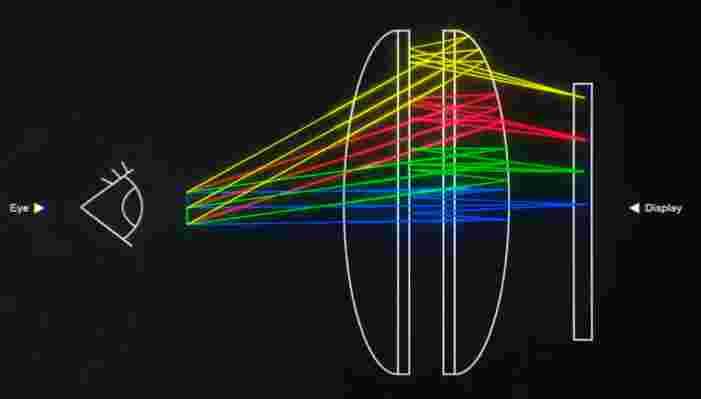
These “pancake” lenses have a thinner profile, reportedly resulting from their use of mini LED panels. Sharper and cooler to run, this is expected to allow Project Cambria’s front area to be much less bulky than that of the Oculus Quest 2, boosting both comfort and resolution.
With a new industrial design afforded by the new lenses, VR data miners have been able to reconstruct what they believe Project Cambria will look like by creating 3D models from render textures. You can find them in the video above and tweet below:
If the sleuthing here points to the real product, the headset will be returning to the darker outer shell design of older Oculus devices, with considerable shaving of the depth off the frontmost element of the headset.
A more pronounced padded forehead rest could be in the cards too, as well as more padding on the rear part of the strap. In conjunction with the apparent reduced weight, these features could lead to a much more comfortable headset than the Oculus Quest 2, taking cues from the Rift S and PlayStation VR, whose front forehead rests lead to very ergonomic fits.
So what about the controllers in those renders…
Project Cambria’s motion controllers look significantly different too. While retaining the disc-on-a-wand design the Quest controllers have popularized, you’ll note that Cambria controllers appear to be lacking the tracking ring earlier models have.
This seems to be afforded by the inclusion of infrared tracking cameras on the controllers themselves. You can see this in both the above renders and the below apparent leaked controller photos, all said to be from a Facebook / Meta Workplace video conference. (Workplace is Meta’s internal Slack / Teams solution).
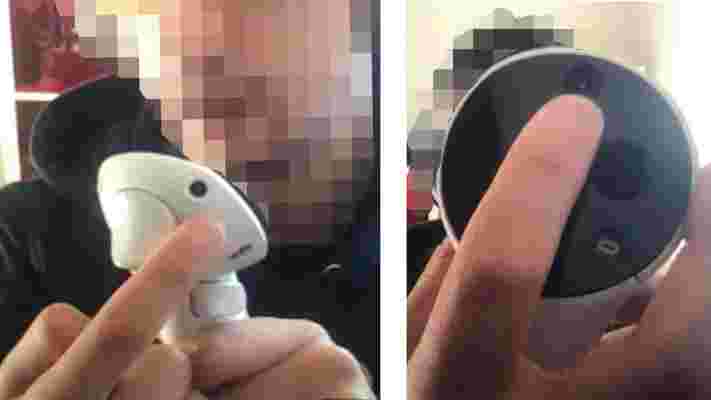
Whether a prototype, or a fake, there’s definitely a correlation between the texture renders and this controller – which also suggests a white colorway may be in the cards for Project Cambria. Dropping the tracking rings would presumably lead to a lighter controller, and reduce the friction between user and VR experience. Previous firmware leaks have suggested that some form of laser-tracking system between the controllers and headset will ensure the two remain in sync and in communication.
Expect hand tracking to increasingly be the norm in VR and AR too; the tracking and processing improvements expected to be found in Project Cambria should help to make the device more accurate and comfortable in day to day use.
Rest assured that the Oculus Quest 3, now more likely to be known as the Meta Quest 3, will still likely launch as a separate offering from Project Cambria.
Speaking with The Information , Zuckerberg stressed that the Oculus Quest line has a long life ahead of it. "We have product teams spun up now working on the next few generations of virtual reality and what Quest 3 and 4 are gonna look like," Zuckerberg stated on the podcast.
Consulting CTO John Carmack also reinforced the idea that Project Cambria represents an expansion of the line, rather than a replacement to existing devices whose price point gives them wider appeal.
“An important point here is that the ‘project Cambria’ product will *NOT* replace Quest 2; it will be sold alongside it,” Carmack said . “Quest 2 will have a long life.”
What will likely happen is that, going forward, Project Cambria will debut the most bleeding-edge VR features for enthusiasts, with those features being implemented later down the line in cheaper, successive Quest devices.
There are now thought to be as many as 10 million Oculus Quest headsets in homes around the world, and it appears Meta has no intention of alienating its existing userbase by encouraging them to re-buy their VR libraries for any eventual Project Cambria headset.
Just as Oculus Quest titles were compatible with Oculus Quest 2, Project Cambria is said to have “compatibility” with the Quest. While Meta hasn’t explicitly referred to this as “backwards compatibility,” it’s hard to understand this any other way. Certainly, the aforementioned orientation video explicitly references Beat Saber in its visuals – perhaps the most popular existing Oculus Quest title of all.
How many of the newer headset’s new features will be taken advantage of by the older software remains to be seen however, though even a more ergonomic form factor could breathe new life into old titles.
PlayStation is gearing up for more studio acquisitions
It looks as though Sony is readying itself to purchase more third-party game studios, as the tech giant is now seeking a director to lead future PlayStation investment and acquisition projects.
In a new job advert spotted by business analyst Roberto Serrano (via VGC ), Sony is advertising for a Director for Corporate Development to identify “inorganic growth opportunities through acquisitions, investments or joint ventures”.
“The team sources, evaluates and completes transactions that are aligned with SIE’s strategic priorities and drive significant long-term value for the company,” the advert continues.
“The foundational work of the team involves developing market insights through strong internal and external relationships to identify attractive M&A [mergers and acquisitions] and investment opportunities.”
That tallies with comments made by Sony Interactive Entertainment CEO and president Jim Ryan earlier this year. Ryan suggested that the company has more third-party studios in its sights, and believed acquisitions and mergers were a useful way of expanding its reach across the market.
“We’re in a really good place with PlayStation Studios right now and have been for the past few years,” Ryan said.
“The critical success and the commercial success of the games that they’ve been making […] that has given us permission to invest heavily in content creation.”

Continuing the trend
The year has been a wild time for studio buy-outs. Take-Two opened 2022 by buying Zynga , before Microsoft surprised everyone by announcing their proposed acquisition of Activision Blizzard for a staggering $69 billion . Sony wasn’t left out in the cold, though, revealing its plans to purchase Destiny developer Bungie .
But acquisitions are hardly a 2022 phenomenon. In 2021, Sony acquired five game studios, including Returnal developer Housemarque, Demon’s Souls porter Bluepoint, Valkyrie Entertainment, Firespirt, and Nixxes.
In light of that slate of buy-ups, it’s hardly surprising that Sony is looking for a dedicated manager to direct future mergers and acquisitions. It’s another indication of the gradual monopolization of the gaming industry, as the major players try to shore up their gaming catalogs ahead of their move to subscription-based sales models.
Sony revealed its revamped PS Plus service a few months ago, which will serve as a competitor to Xbox Games Pass . It will be keen to do everything it can to make the service more attractive than Microsoft’s, such as by securing a slate of PlayStation-exclusive third-party titles.
That’s doubly important in Sony’s case. The publisher has already announced that its first-party releases won’t be added to PS Plus on the same day they release, meaning subscribers won't be able to access Sony’s latest, triple-A titles. Microsoft, however, has seen much success adding first-party titles like Halo Infinite to Xbox Game Pass on launch day. If Sony can’t find some other novelty to draw in players, it’ll miss out.


